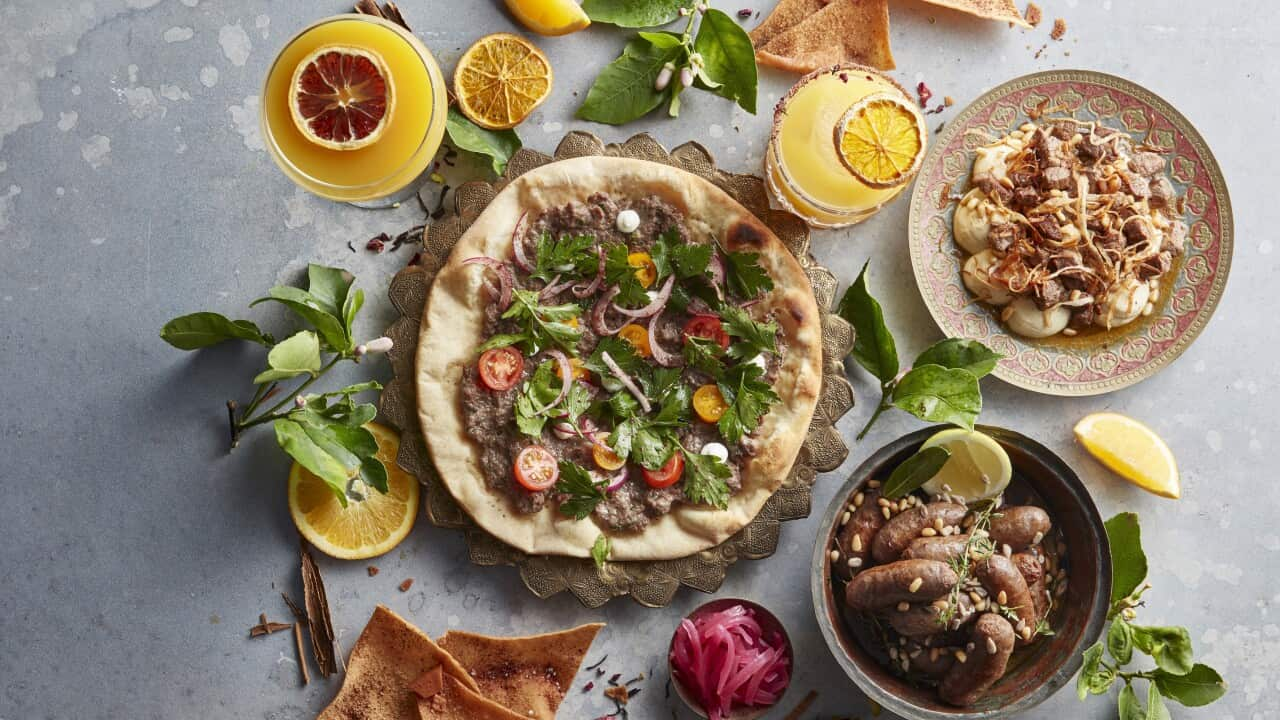Growing up at his grandparents' home in rural China, fresh food was a way of life for Chris Yan. It had to be. "To buy something you really needed, you had to walk one hour to the town," he says. "So at home, we had a pig, chickens, ducks and a small field where we grew vegetables. What we ate is what we grew."
Although as a young child the head chef couldn't cook (his grandma deemed the charcoal–fed stove too dangerous), his memories of eating are vivid.
"Where I grew up, lotus plants were growing in the pond. The neighbour would jump in the water, pull up a plant and we'd eat it straight away. It was so fresh."
CHRIS YAN ON COOKING WITH LOVE

Be true to yourself and cook with love: a Shanghai success story
Meat was harder to find, but fish was abundant. The same neighbour fished in the river and shared with Yan's family. "We didn't have a fridge, so we'd salt the fish and hang it out to let the wind dry it, then we could keep it longer."
Yan was lucky to be in the country. His older brother, parents, and later his younger sister lived two hours away in Shanghai. In 1970s China, everything was bought with tickets provided by the government and in a big family, the tickets were never enough. "In the city, we were short of everything. In one month, you get 10 kilos of rice. It's enough if you don't have so many kids, but three kids? Ten kilos is not enough."
When you cook, you have to put in not just passion. You have to put in love.
In a time of scarcity, being able to make much of little was an advantage. "One of my favourite dishes from grandma is just tomato, tofu and mushrooms," he says.
The mushrooms foraged from the field, the tomatoes are grown in the garden and the tofu homemade. "The food was really simple, but it was delicious."
Yan applies that ethos of simplicity to his menus at Lotus Dining Group's seven Sydney restaurants. But simple doesn't mean expected. "I want to use things in my cooking people never thought about," he says. That could mean punctuating traditional Chinese recipes with native Australian ingredients like warrigal greens, pepperberry or cassia bark.
It's a technique Yan learned working under Kylie Kwong at the now-closed Sydney institution, Billy Kwong.
When he thinks about his grandma's cooking though, a dish with traditional ingredients comes to mind: red–braised pork belly. It was something reserved for special occasions, like when an older Yan would return to the country from Shanghai during school holidays.
"She tied the pork belly up with rice straw and braised it for so long that when you ate it, it would melt in your mouth. It tasted so good," he says. The red braised pork belly was a menu staple at Lotus the Galeries for many years, and Yan says the flavour still brings him back to childhood.
In a dish with only seven components, there's nowhere to hide bad ingredients.
"When we buy pork belly at the butcher, we need big pieces with more fat. But I always tell them I don't want the part with the nipples. That's the worst part." Yan cuts the belly into bite-sized pieces and blanches them in water with Sichuan peppers, before rinsing the meat clean. The braising sauce is a combination of light and dark soy, shallots, Chinese cooking wine and rock sugar. "Don't use caster sugar," he says. "Caster sugar is just sweet. Rock sugar tastes clean and then sweet."
Yan cuts the belly into bite-sized pieces and blanches them in water with Sichuan peppers, before rinsing the meat clean. The braising sauce is a combination of light and dark soy, shallots, Chinese cooking wine and rock sugar. "Don't use caster sugar," he says. "Caster sugar is just sweet. Rock sugar tastes clean and then sweet."

Why love – and being free to be yourself – are chef Chris Yan's most crucial ingredients. Source: The Chefs' Line Series 2
Yan says pork belly meat can end up tough if it's braised in a pot, and that steaming is the secret to maintaining its juiciness. The meat is steamed for an hour and a half until a chopstick pokes smoothly through the fat. Then it's set aside and the sauce is reduced before the pork is re-added.
The final component can't be bought. "When you cook, you have to put in not just passion. You have to put in love," he says.
"Kylie [Kwong] said to me, 'good food makes people happy. It makes them laugh'. But I think good food can also make people cry. It touches the bottom of their hearts, and makes memories come back."
Red-braised pork belly
Ingredients
- 700 g pork belly
- 200 ml Chinese cooking wine
- 1 tbsp Sichuan peppercorns
- 150 ml light soy sauce
- 1 tbsp dark soy sauce
- 100 g rock sugar, broken into small pieces
- 1 shallot washed and cut into 2 cm batons
1. Wash pork belly and cut into bite-sized pieces. Place pork belly in a pot and cover with cold water. Add Sichuan peppercorns, bring to the boil and simmer for five minutes. Skim the surface of the water and wash the meat.
2. Place the pork belly in a large ceramic bowl, add in Chinese cooking wine, light and dark soy sauces, rock sugar and shallots. Place the bowl in a wok filled with water, or in a bamboo steamer and steam*, lid on, for around one and a half hours or until chopsticks poke easily through the pork fat.
3. If steaming isn't possible, the pork belly can be braised in a pot. Place pork belly in a pot, add Chinese cooking wine, light and dark soy sauces, rock sugar and shallots. Bring to the boil, lower heat to cook for one hour or until chopsticks poke easily through the pork fat.
4. Separate the pork belly from the sauce, and to wok and reduce the sauce over high heat. Once it’s thickened, add pork belly back and stir well to coat the meat.
5. Eat with rice and Asian green vegetables
*Note: Both cooking methods produce a tasty dish, but steaming ensures the fat and lean meat are both soft and juicy. If the meat is braised in a pot, the pork fat will be tender, but the meat will be slightly dry, although still tasty.
Photographs by Chris Yan







